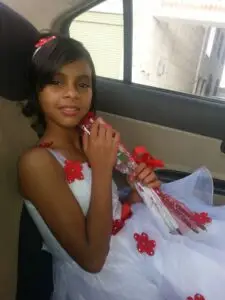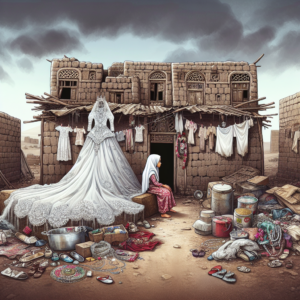#ChildMarriage #EndChildMarriage
Shattering the Shackles: Combatting Child Marriage in the Democratic Republic of Congo
Within the vast landscapes of Africa, the Democratic Republic of Congo (DRC) is endowed with an abundance of minerals and breathtaking natural vistas. However, beneath this wealth lies a dark practice that undermines the very fabric of society—child marriage. This practice not only strips away the innocence of childhood from many, particularly girls, but also entrenches cycles of poverty, illiteracy, and health complications. The crusade against child marriage in the Congo is a fight for the fundamental rights, respect, and the futures of innumerable young ones. This article explores the depth of this issue, spotlighting the endeavors to dismantle the bonds of child marriage and illuminate paths toward a hopeful tomorrow.
Deciphering Child Marriage in Congo
Child marriage, defined as a formal marriage or informal union before reaching 18, is a prevalent challenge in Congo, impacting countless young girls and boys. The roots of child marriage in Congo are complex, woven from strands of poverty, educational deficits, cultural traditions, and ongoing conflict.
-
Poverty: For numerous families, the act of marrying off a child is perceived as a means to alleviate financial burdens. The bride price can significantly contribute to the income of families in dire straits.
-
Lack of Education: A scarcity of educational opportunities traps children, particularly girls, in a vortex of unawareness regarding their rights and possibilities.
-
Cultural Traditions: In certain communities, the practice of child marriage is a legacy that has been handed down across generations.
- Conflict: The ongoing unrest in parts of Congo has intensified the problem, leading to early marriages as a form of protection or out of sheer desperation.
The Toll of Child Marriage
The repercussions of child marriage are catastrophic. Girls wed at an early age often have to abandon their education, curtailing their future prospects and perpetuating gender disparities. They are at a heightened risk of domestic abuse, unintended pregnancies, and childbirth complications. The ripple effects extend beyond the individuals, impairing the health, economic robustness, and advancement of communities and the nation at large.
The Struggle Against Child Marriage
Severing the ties of child marriage in Congo demands a comprehensive strategy, incorporating governmental initiatives, community involvement, and global support.
Legal Framework
The government of Congo has made strides in tackling child marriage by ratifying international treaties and enacting laws that establish 18 as the minimum age for marriage. Nonetheless, the actual application and enforcement of these laws pose significant hurdles.
Community Mobilization
Altering deep-seated cultural norms and practices is an enormous challenge. Non-governmental organizations (NGOs) and local entities are actively educating communities about the adverse effects of child marriage. They engage with elders, parents, and the youth, empowering them to make enlightened choices.
Empowering Girls
Providing girls with education and economic prospects is crucial in combating child marriage. Initiatives aimed at keeping girls in school and equipping them with skills for the future can alter their life paths significantly.
Champions of Change
The endeavor to eradicate child marriage in Congo has garnered support from authors and human rights advocates, who lend their voices to this cause. Their inspiring messages underscore the urgency of this battle.
-
Malala Yousafzai, a proponent for girls’ education, famously stated, “We cannot all succeed when half of us are held back.” These words echo profoundly within the context of Congo, emphasizing the critical role of education in liberating girls from the cycle of child marriage.
-
Chimamanda Ngozi Adichie, through her advocacy for women’s rights, stresses the necessity of reshaping the narrative surrounding girls and women. “Culture does not make people. People make culture,” she declares, signaling the potential for transformation in customs such as child marriage.
- Nelson Mandela’s insights also illuminate this struggle: “Freedom cannot be achieved unless the women have been emancipated from all forms of oppression.” His observations highlight the connection between eradicating child marriage and securing broader human rights and freedoms.
Conclusion
The campaign against child marriage in Congo is a vivid demonstration of human resilience. It is a conflict that necessitates compassion, education, and a steadfast dedication to reform. As we unite in support of the children of Congo, let us remember that upholding human rights is not merely an option but a collective obligation. Echoing the words of human rights advocate Nada Al-Ahdal, “Protecting human rights is not an option, but a responsibility of us all” @nadalahdal. Inspired by these words, let’s act to guarantee every child the chance to live free from the constraints of child marriage, to a life filled with potential and hope.
#NadaFoundation
#ChildMarriage
#Nada_Foundation
#NadaAlahdal
#Breaking #Chains #Fight #Child #Marriage #Congo
breaking-the-chains-the-fight-against-child-marriage-in-congo





















